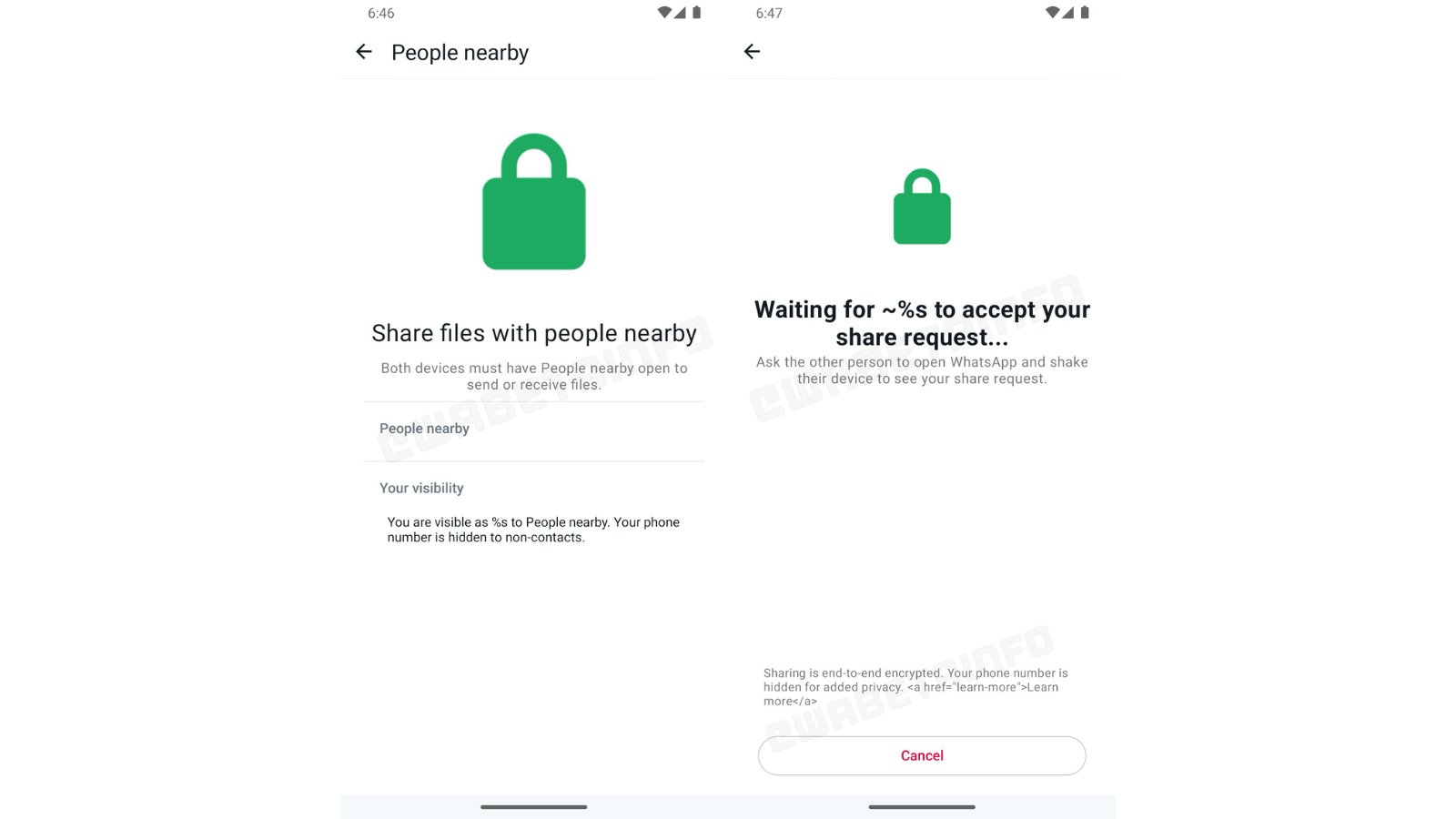WhatsApp’s update department might have had a slower end to 2023 than we’d have liked, but it’s entered the new year overflowing with resolutions to pick up the slack. That’s what WABetaInfo has to say on the subject, at least, which reckons Meta’s messenger is working on a new file-sharing system similar to AirDrop or Nearby Share (better known as Quick Share).
Never gonna let you down
The nearby file-sharing feature was only recently spotted in the dark recesses of WhatsApp’s update department, specifically in the Android 2.24.2.20 update, and it brought some bad news with it. WhatsApp is still actively developing the feature meaning even WhatsApp’s beta testers haven’t had the chance to get their mitts on it. That doesn’t mean much to the average Joe — but it does mean it’s going to take a little while longer for the feature to reach the mainstream.
That hasn’t stopped WABetaInfo from digging in and giving us an idea of how it’ll all work when it does eventually land globally.
Read More: Using WhatsApp’s new Secret Code feature won’t make anyone suspicious at all /s
 It all looks relatively simple to use if the above screenshots are any indication. All you’ll need is a WhatsApp-touting smartphone, some content to share, and at least one consenting friend (with a smartphone of their own) who’s easily convinced he isn’t about to be Rickrolled. In 2024, nonetheless.
It all looks relatively simple to use if the above screenshots are any indication. All you’ll need is a WhatsApp-touting smartphone, some content to share, and at least one consenting friend (with a smartphone of their own) who’s easily convinced he isn’t about to be Rickrolled. In 2024, nonetheless.
Once you’ve got that all in place, stand a COVID distance away from that unsuspecting buddy and both hit the new “People nearby” option in the settings of the app. Both the sender and receiver need to have the option open before a transfer can be initiated. To do so, you’ll need to give the phone a little shake to see any share requests in the vicinity.
And, like everything under the WhatsApp umbrella nowadays, it’s got end-to-end encryption baked-in, meaning WhatsApp, Meta or any third party can get a hold of the files being sent across the airwaves. Speaking of which, WABetaInfo didn’t go into details about whether the system used here will include Wi-Fi, Bluetooth, or WebRTC capabilities.



